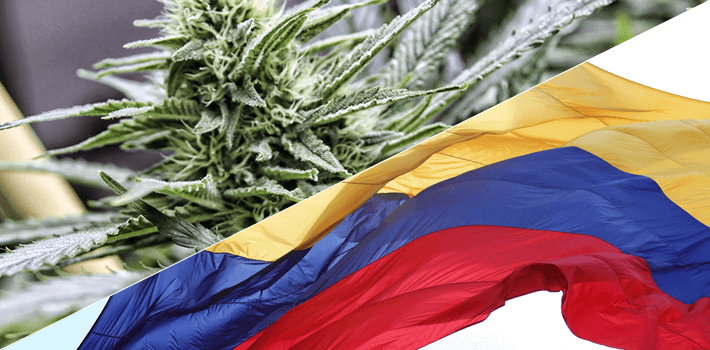Colombia is metamorphosing into a prominent medical cannabis producer
Colombia is tapping into the “Green Rush”, with the South American country bestowing numerous licenses upon cannabis cultivators since 2017.
The number of licensed cannabis growers is swelling in Colombia, increasing from 60 – when licenses were first being issued in 2017 – to more than 300 as of today.
With is pristine climate and low cultivation costs, it’s not really surprising that’s the culture-rich country is getting involved in cannabis cultivation.
Colombia cannabis cultivation and exports will help country to strengthen its economy
Formerly the territory of cocaine King Pablo Escobar, Colombia is transforming from an illicit drug country to a legal haven for medical cannabis exports.
Within the last 7 years, Colombia’s economy has been on the incline; growing at an average of 3.8 percent during that time frame. If this figure is compared to the economy of other South American countries, Colombia constitutes the third largest.
The country boasts ports in the Pacific Ocean and the Caribbean Sea. Cannabis plants thrive here, due to the fact that approximately Colombia welcomes 12 hours of sunlight every day.
Considering the fact that the global medical cannabis market is worth, Colombia’s economy stands to inflate even more as time progresses.
Colombia’s legal cannabis framework was developed by former president
It was during the presidential term of Juan Manuel Santos (2014-2018) that Colorado’s legal framework for cannabis cultivation was developed. Decree 613 saw the creation of four types of growing licenses. They are as follows:
- Cultivation of psychoactive cannabis
- Cultivation of non-psychoactive cannabis
- Manufacturing of cannabis derivatives
- Use of seeds to sow
Since regulatory framework work was drafted by the former president of Colombia, production has skyrocketed. This year, 40.5 tons of medical cannabis can be produced in Columbia, as per terms laid out by the international narcotics control board (INCB). That’s equivalent to 44 percent of global medical cannabis production.
338 licenses to cultivate cannabis in Colombia approved from 2017-2019
Once the INCB had permitted medical cannabis production in Colombia, 12 companies made the move to start growing the plant for medicinal purposes.
Between 2017 and 2018, 132 licenses were awarded to cannabis cultivators in Colombia; Seven of those licenses were for the use of seeds to sell, 40 for the cultivation of psychoactive cannabis plants, 48 for the cultivation of non-psychoactive cannabis plants and 37 for the manufacturing of cannabis derivatives.
Between the years 2017 and 2019, 338 cannabis cultivation licenses had been distributed among growers in Colombia; 35 of those licenses were for the use of seeds to sell, 83 for the cultivation of psychoactive cannabis plants, 129 for the cultivation of non-psychoactive cannabis plants and 91 for the manufacturing of cannabis derivatives.
Only manufactured derivatives from cannabis in Colombia permitted for export
During the time period mentioned above, 15 separate departments dealt with cannabis cultivation and the manufacturing of derivatives in Colombia.
Colombia’s cannabis law specifically states that medical cannabis products can only be exported from the South American country if they are produced using the plant’s manufactured derivatives. This law ensures that patients receive the best quality medical cannabis products.
With the cost being of production being so low – as opposed to production in cannabis-friendly places like Canada and the United States – Colombia is expected to reap the rewards of legalizing medical cannabis cultivation for export purposes.
In Canada and the U.S., the cost of cultivation varies from US$1.30-$2 per gram, whereas in Colombia, one gram of cannabis flower can be produced for as little as five cents.
The warm climate plays a big role in low-cost cannabis production in Columbia, what with year-round sunshine eliminating the need for specialized lighting to be fitted inside grow facilities.
Moreover, labor is cheap and there is no lack of available land for cannabis cultivation in Colombia, thus stimulating investor interest in this part of the world.








